Honors Background
Every spring at Honors Day, the physics department recognizes outstanding students with awards for academic achievement, research accomplishments, and departmental leadership. Many of those awards have been made possible by the generosity of the department's friends and alumni. Below is some background on the exceptional people who have made supporting great students part of their legacy.
- Joseph Fowler and Jerry Marion
- Wayne Kincaid
- Robert Lide
- James W. McConnell
- James E. Parks
- Douglas Roseberry
- Paul Stelson
- Robert Talley
Dr. Joseph Fowler and Dr. Jerry Marion were colleagues who co-authored the textbook “Fast Neutron Physics.” They donated the book royalties to the physics department, where the funds were used in part to establish an award recognizing outstanding achievement by a graduate student.
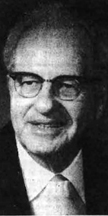
Dr. Joseph Lee Fowler earned both bachelor’s and master’s degrees from UT. He joined the Manhattan Project at Los Alamos in 1944, a year after receiving his doctorate in physics from Princeton University. He worked on weapons physics from 1944 to 1946 and was group leader for research with the Cyclotron from 1946 to 1950.
Dr. Fowler joined Oak Ridge National Laboratory in 1951 as Director of the High Voltage Laboratory. In 1954, he was promoted to Director of the Physics Division, a post he held for more than 15 years before his retirement in 1973. In 1974, he renewed his association with UT as a professor, teaching courses and pursuing research in free quarks. He was a member of the American Physical Society, chairman of its Southeastern section, and a member of the executive committee of its Nuclear Physics division. He was chairman of the International Conference on Nuclear Cross-Sections and Technology, a member of the American Association for the Advancement of Science and a member of the Tennessee Academy of Science. He died June 3, 1984.
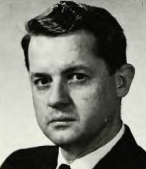
Dr. Jerry B. Marion was born in Mobile, Alabama, in 1929. He received a bachelor’s degree from Reed College in 1952 and master’s (1953) and Ph.D. (1955) degrees from Rice University. Following brief appointments at the University of Rochester and Los Alamos, in 1957 he joined the University of Maryland Department of Physics and Astronomy, where he was co-director of experimental nuclear physics at the University's Van de Graaff laboratory and a principal investigator at the cyclotron laboratory.
Dr. Marion was also a staff scientist for Convair and a MARION consultant to General Dynamics, Shell, Grumman Aircraft, Radiation Dynamics and Oak Ridge National Laboratory. He was a member of the Nuclear Physics Panel of the National Academy of Sciences and a member of the editorial board of Nuclear Data. Dr. Fowler died August 2, 1981.
Ronald Wayne Kincaid was an alumnus of the physics department, earning a bachelor’s degree in 1975 and a Ph.D. in theoretical nuclear physics in 1992, subsequently joining the department as a research associate.
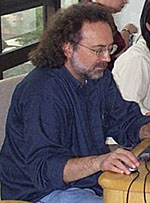
Dr. Kincaid devoted his energy to developing tools that would make learning engaging and accessible for students at all levels. He combined his love for astronomy and astrophysics with his keen interests in computing, writing, and education to build Web-based programs and tutorials. He helped develop webTeacher, an Internet training tool designed for teachers, and contributed his time as WebMaster of Tech Corps, a nationwide network connecting technology volunteers with K-12 schools.
Dr. Kincaid passed away on September 15, 2004, at the age of 51. The department established the Wayne Kincaid Award in 2007 to honor his legacy and to honor a student who shares his love for astronomy and astrophysics education and who has made exceptional contributions to educational technology, astronomy education, or scientific writing.
Robert Wilson Lide was born on June 27, 1922, in Hwanghsien, China, the son of American missionaries. He spent his childhood moving back and forth between the U.S. and China, graduating from high school in China in 1939 and returning to the U.S. to attend college at Wake Forest. He graduated with a physics degree in 1943 before joining the U.S. Navy, serving as an engineering officer during WWII. He then went to the University of Michigan, where he earned his M.S. and Ph.D. degrees in physics.
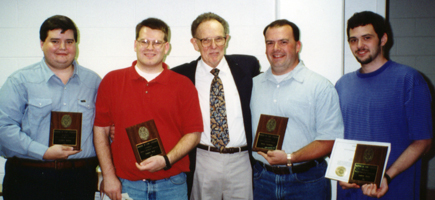
Dr. Lide joined the physics department in 1957 as an assistant professor. For many years he was responsible for the nuclear physics laboratory, but he was best known for running the undergraduate laboratories. Even after he retired in 1991, he continued to come to campus week after week to help set up experiments. His handwritten notes were the basis for the laboratory set-up manual still used by physics teaching assistants. It was this spirit of service that inspired the physics department to establish laboratory citations in his honor. Awarded for the first time at the 1998 honors day celebration, these citations recognize students who have made exceptional contributions to the undergraduate instructional laboratories. Dr. Lide was in attendance at the ceremony, which was shortly before his passing on May 26, 1998.
James W. McConnell earned a bachelor's degree in electrical engineering in 1961 and a master's in 1962. He passed away on March 25, 2008, at the age of 68. He was by all accounts a quiet, humble man who sought no recognition for his generosity during his lifetime, but his kindness to the physics department will certainly be a lasting legacy. McConnell established the James W. McConnell Physics Excellence Endowment with a $25,000 donation. He chose to supplement this contribution with an extremely generous bequest in his estate, which resulted in $1 million in gifts to the physics department. He established an identical fund in the Department of Electrical and Computer Engineering department. The McConnell fund has supported both undergraduate and graduate scholarships in the past, and for the first time in 2012, the department awarded the James W. McConnell Award for Academic Excellence. This honor recognizes undergraduate physics majors who have senior standing and who have demonstrated outstanding performance in academic coursework.
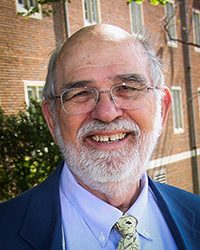
Dr. James E. Parks earned a B.S. in physics from Berea College, a master’s in physics from UT, and the Ph.D. from the University of Kentucky. He taught at Berea College and was a full professor at Western Kentucky University, served as technical director for Atom Sciences in Oak Ridge, and was director of UT’s Institute for Resonance Ionization Spectroscopy. In 1993 he became director of UT's undergraduate laboratories. Dr. Parks has drawn on his deep and varied experience to transfer ideas from industry and research to the undergraduate laboratory curriculum. He develops experiments and designs equipment where none exists. He has also designed and directed four NSF workshops to help faculty at small colleges build their teaching labs, and is the author of our department’s physics lab manual. Physics alumnus Richard Manley and his wife Melissa established this award in early 2015 to honor Dr. Parks’ commitment to hands-on, innovative physics teaching in a laboratory setting.
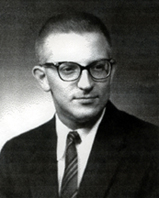
Douglas Roseberry was an energetic student with a penchant for physics and a great enthusiasm for participation in departmental and university extracurricular activities. A member of Phi Beta Kappa, he was described by former department head Alvin Nielsen as "clearly the epitome of what a fine student should be." Douglas had done work in Huntsville, Alabama, as well as Oak Ridge National Laboratory, and had been an undergraduate research assistant to Dr. Isabelle Tipton. He had planned to pursue graduate study at Princeton University when an aneurysm claimed his life in October 1959.
In the spring of 1960, the department awarded the first Douglas V. Roseberry Award to honor the young scholar’s legacy and recognize another student of like qualities, including department participation and exceptional academic performance. The honor was established by Phi Sigma Kappa, Douglas’ fraternity.
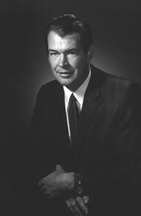
Dr. Paul H. Stelson received his B.S. and M.S. degrees from Purdue University and a Ph.D., at age 23, from the Massachusetts Institute of Technology. After working at M.I.T., he joined the Oak Ridge National Laboratory in 1953 as a nuclear physicist. He became Director of the ORNL High Voltage Laboratory in 1963 and Associate Director of the Physics Division in 1971. In 1973, he was appointed Director of the Physics Division. During his tenure as Director, the Holifield Heavy-ion Research Facility was funded, built, and became operational. In 1983, he returned to full-time research. He was well known in the physics community for his research on Coulomb excitation. He also made major contributions to a large number of subdisciplines of physics, participating in research on the transfer reaction induced by light and heavy projectiles, fusion, emission of energetic light ions, energy level structure of radioactive nuclei, inbeam gamma-ray spectroscopy, accelerator and detector development and atomic physics.
Dr. Stelson received the Jesse W. Beams Award from the Southeastern Section of the American Physical Society in 1986 and was a Fellow of the American Physical Society. He especially enjoyed interacting with young physicists, serving as an adjunct professor in the physics department from 1967 until his death in 1992. His family established the Stelson Fellowship in his memory to assist aspiring physicists in completing their education and to continue the fruitful interactions in physics between UT and ORNL.
Robert Talley was a native of Erwin, Tennessee, who came of age in the 1940s. He attended the University of Virginia before transferring to the University of South Carolina, where he earned a degree in naval science and engineering. After sweeping mines for the U.S. Navy in Japanese waters for more than a year he applied to the graduate program in physics at the University of Tennessee. He earned a master’s degree in physics in 1948 and a Ph.D. in 1950 under the direction of Dr. Alvin Nielsen.
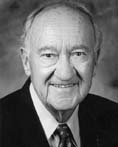
Dr. Talley went on to become chief of the Naval Weapons Center Solid State Division in White Oak, Maryland. In 1958 he moved to Santa Barbara, California. He went to work for the Santa Barbara Research Center, a Hughes Aircraft Company, building infrared detectors and sensors for the Department of Defense and the national space program. One of the sensors was for the Pioneer satellite and took pictures of Venus, Jupiter and other planets before being the first man-made object to leave the solar system with the sensor still working 30 years later. Dr. Talley retired in 1989 as president and CEO.
Dr. Talley was a member of the University of California-Santa Barbara Foundation Board of Trustees and served as chair of the UCSB College of Engineering Dean’s Advisory Committee. He was an early member of the Santa Barbara Science and Engineering Council and the Santa Barbara Industrial Association. He is an emeritus of the Santa Barbara Partners in Education program. In 2004 he was recognized with the physics department's Distinguished Alumni Award for "His Outstanding Contributions to the Infrared Technology Industry and His Extraordinary Dedication to the Students of our Department."
Dr. Talley and his wife Sue, (also a UT graduate) established the Robert Talley Physics Endowment at UT to encourage and support students earning bachelor’s degrees in physics. The fund supports both undergraduate scholarships as well as awards for outstanding undergraduate research and leadership.